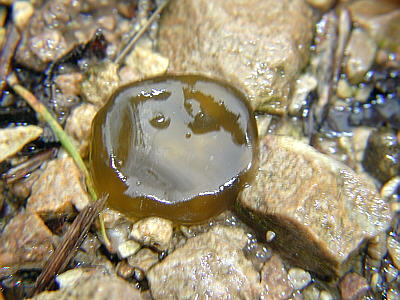 |
|
|
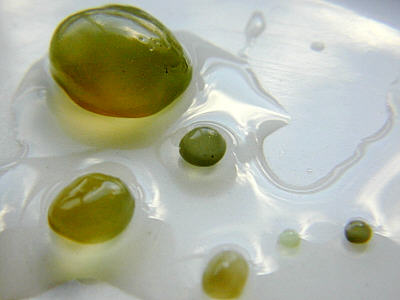 |
|
|
|
|
| A
persistent alga in evidence in the autumn
Brief look at the simplest of algae By Paul James (UK) |
My stone covered drive and yards tend to be hosts to a particularly interesting, if not rather unwanted form of algal invasion. Its appearance somewhat resembles dark green grapes, slightly flattened and of varying sizes, and en mass they tend to be slippery and therefore unwanted on driveways and the like. In the summer they dry up and turn black.
Nostoc as seen on my stone covered drive Different sized colonies of nostoc
Nostoc is a very simple alga, belonging to the Cyanophycae group ( Blue-Green algae ). The gelatinous bodies shown above consist of numerous internal filaments called trichomes encapsulated within a sheath or skin.Each trichome being simple, free and often curved or coiled. They appear to be more densely populated toward the outer 'skin' of the body.
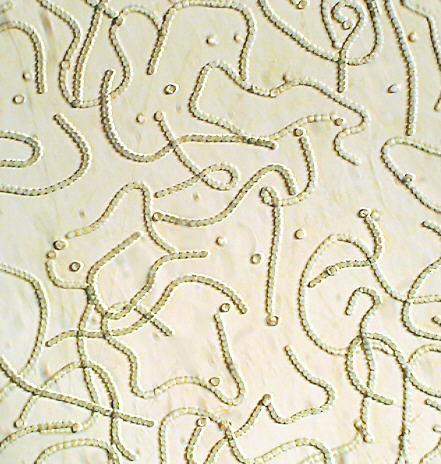 |
| Trichomes under oblique lighting |
The filaments or 'trichomes' are in great abundance and cause the slimy feel when the gelatinous colonies are ruptured. This abundance is brought about by vegetative reproduction which continues within the colony until such time as the moisture disappears. Then the many of the cells form spores, yielding the blackish mass seen in dry weather.
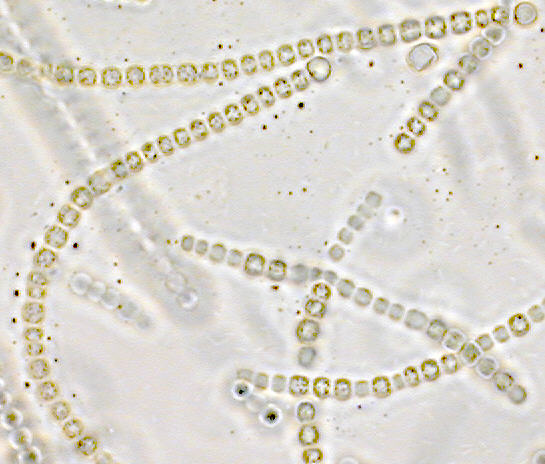 |
| Here the filaments
show some evidence of an outer sheathing and
also cellular metachromatic granules. Zeiss x40 Apochromat illuminated via x40 phase ring which can cause phase shift in an ordinary non phase objective, darkening considerably in this case the cellular granules in some cells. |
The majority of the cells seen are of similar size and contain no nucleus as such, but a number of chromatin 'granules'. Heterocyst cells occur in the filaments, and at which point the filament breaks into new colonies called hormogones, which are short length filaments which develop into larger lengths by vegetative reproduction.
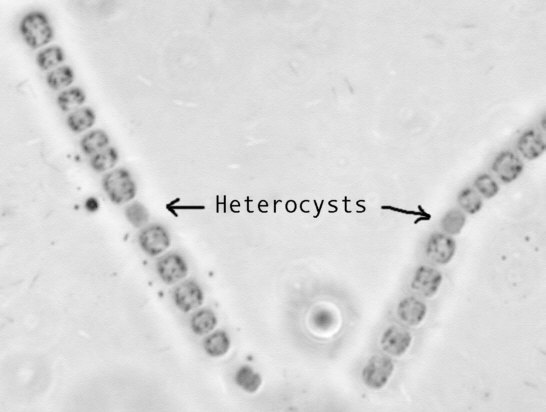 |
| Phase etc., as above
but with x 40 Wild achromat, and
Optovar image amplification of x2 yielding x 800 total. Also tonal range expanded to increase contrast of metachromatic granules. |
As the gelatinous body matures the cells in the trichome change into akinetes, which are cells capable of forming new filaments. I should imagine that when the colonies desiccate in dry weather, these akinetes can survive dry conditions and ultimately start new colonies elsewhere when water reinvigorates their activities.The simple fact that they return each autumn suggests that these spores are indeed capable of surviving drought and ultra violet radiation in the summer. Tough customers indeed.
All photo's obtained using a Nikon Coolpix 800 digicam.
| All comments to the author Paul James are welcomed. |
Please report any Web problems or
offer general comments to the
Micscape
Editor,
via the contact on current Micscape
Index.
Micscape is the on-line monthly magazine
of the Microscopy UK web
site at Microscopy-UK